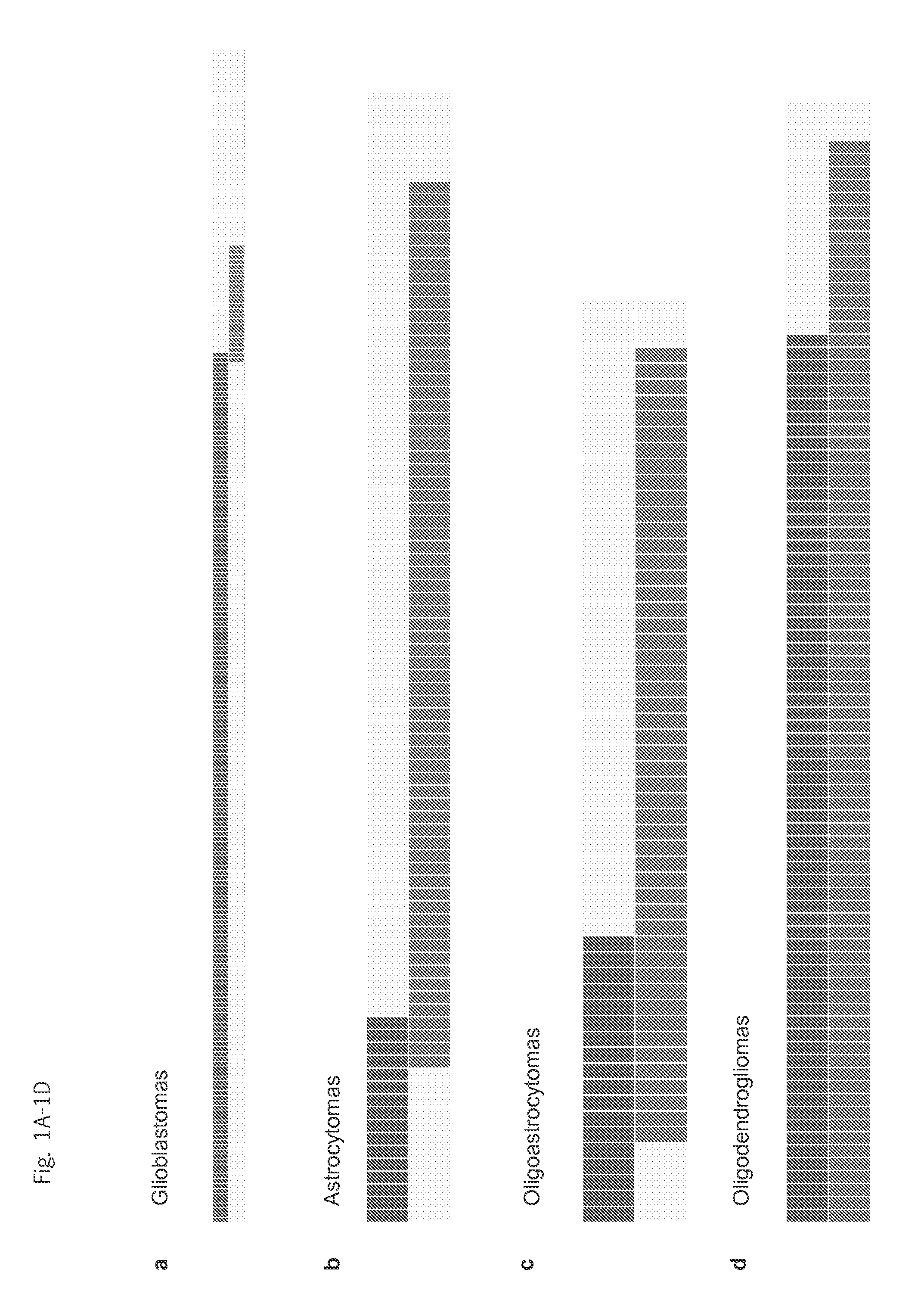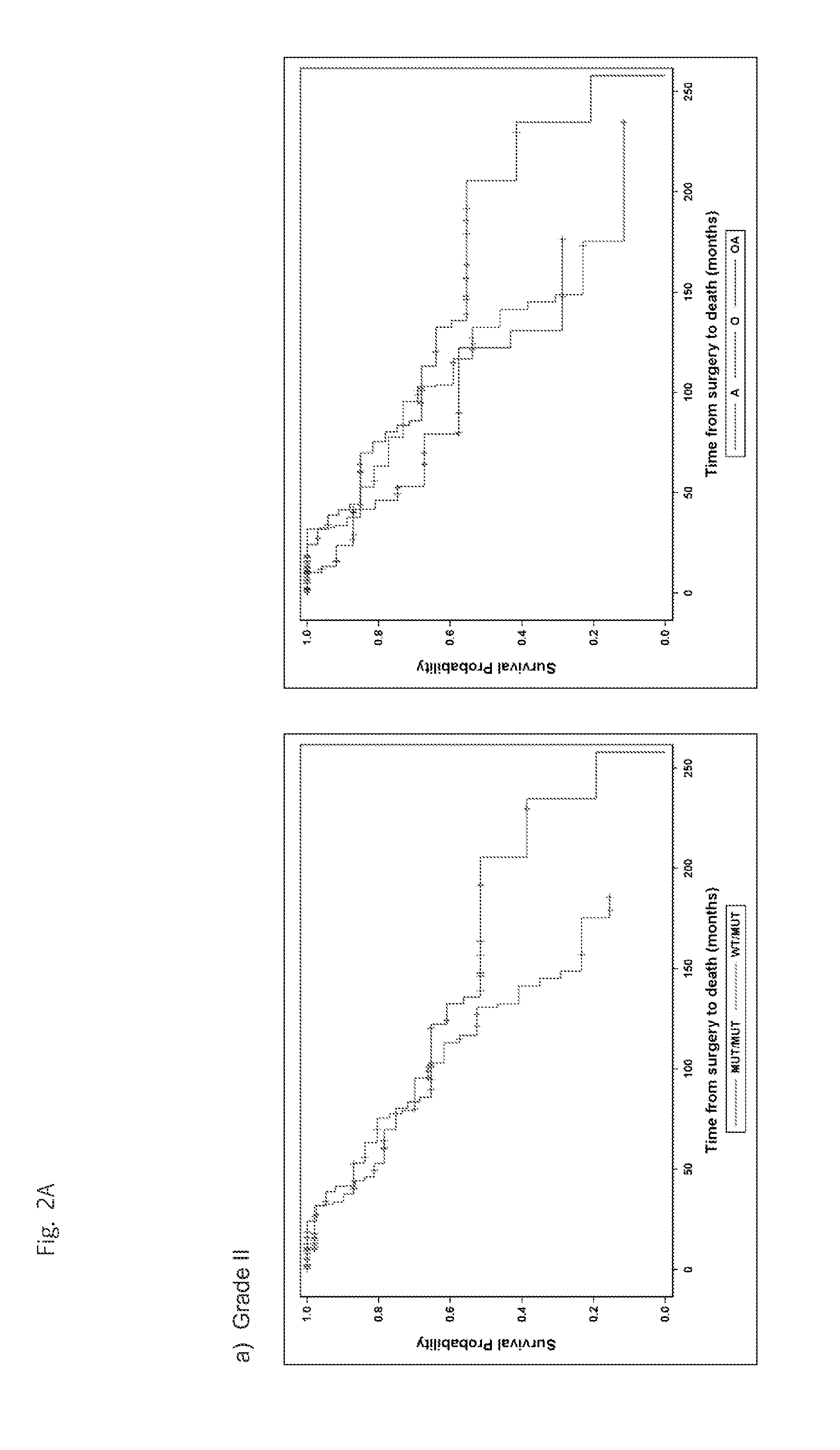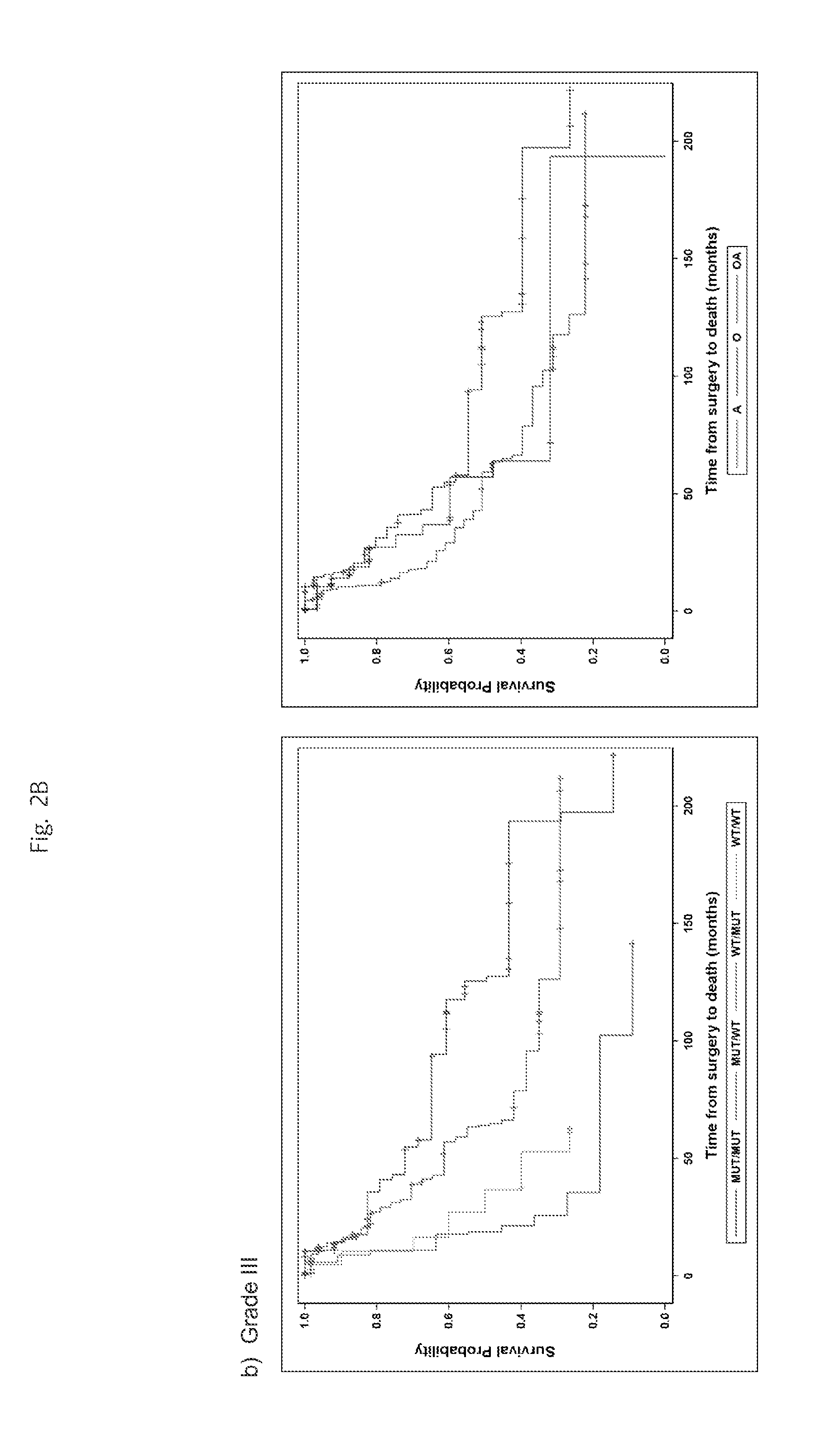Mutations define clinical subgroups of gliomas
a technology of gliomas and mutations, applied in the field of cancer characterization and management, can solve the problems of variable treatment and management, neurologist diagnostic challenges,
- Summary
- Abstract
- Description
- Claims
- Application Information
AI Technical Summary
Benefits of technology
Problems solved by technology
Method used
Image
Examples
example 1
Methods
Sample Collection, Processing, and Sequencing
[0041]Adult glioma (18> years old) and corresponding clinical information were obtained with consent and Institutional Review Board approval from the Preston Robert Tisch Brain Tumor Center BioRepository at Duke University in accordance with the Health Insurance Portability and Accountability Act. Newly diagnosed versus recurrent glioma status and vital status were determined by clinical chart review. Fresh frozen tissue sections (first and last sections from the block, stained with hematoxyline and eosin) were reviewed by a board-certified neuropathologist (REM) to confirm original clinical histopathologic diagnosis and to ensure intervening studied sections contain >80% tumor cells. DNA was extracted from 240 Grade IV GBMs, 88 Grade II and Grade III astrocytomas, 58 Grade II and Grade III oligoastrocytomas, and 87 Grade II and Grade III oligodendrogliomas. Of the 473 tumors, 160 gliomas had been analyzed in our previous studies o...
example 2
TERT Promoter Mutations are Frequent in Primary GBMs and Pligodendrogliomas but Uncommon in Lower Grade Astrocytoma
[0043]To assess the prevalence and prognostic impact of TERT promoter mutations we sequenced the proximal TERT promoter hotspot mutations (C228T and C250T) in 473 adult gliomas. We identified TERT promoter mutations in 281 (59.4%) tumors (FIG. 1). In agreement with previous studies [16, 18, 23], we identified TERT promoter mutations in 74.2% of grade IV GBMs (178 / 240). TERT promoter mutations were also common in oligodendrogliomas (79.3%); however, TERT promoter mutations were less frequently identified in Grade II-III astrocytomas (18.2%, 16 / 88). Furthermore, we observed a moderate frequency of TERT promoter mutations in oligoastrocytomas (31.0%, 18 / 58). As expected, GBMs were diagnosed in older patients when compared to other histologic subtypes studied here (Table 1). Within each tumor type, TERT promoter mutations were associated with an older age at diagnosis (Tabl...
example 3
Co-occurring Mutations in TERT Promoter and IDH1 / 2
[0044]IDH1 / 2 mutations are a well-established molecular feature of gliomas [12]. To define the co-occurrence of IDH1 / 2 mutations and the presence of TERT promoter mutations, we determined the status of IDH1 and IDH2 mutations in the same cohort of 473 gliomas and identified mutations in 47.9% (227 / 473) of tumors (FIG. 1 and Table 1). IDH1 / 2 mutations were much less prevalent among GBMs (10%), and much more common in Grade II-III astrocytomas (78.4%), oligoastrocytomas (86.2%) and oligodendrogliomas (96.5%). TERT mutations occurred in the absence of IDH1 / 2 mutations in GBMs (73.3%, 176 / 240). However, in oligodendrogliomas, the TERT promoter mutation always occurred in the setting of the IDH1 / 2 mutation, which is frequent in both oligodendrogliomas and astrocytomas (FIG. 1) [12]. The cross-tabulation of TERT promoter and IDH1 / 2 mutations aligned with three of the four histologic subtypes. GBMs were characterized as primarily TERT promo...
PUM
 Login to View More
Login to View More Abstract
Description
Claims
Application Information
 Login to View More
Login to View More - R&D
- Intellectual Property
- Life Sciences
- Materials
- Tech Scout
- Unparalleled Data Quality
- Higher Quality Content
- 60% Fewer Hallucinations
Browse by: Latest US Patents, China's latest patents, Technical Efficacy Thesaurus, Application Domain, Technology Topic, Popular Technical Reports.
© 2025 PatSnap. All rights reserved.Legal|Privacy policy|Modern Slavery Act Transparency Statement|Sitemap|About US| Contact US: help@patsnap.com



